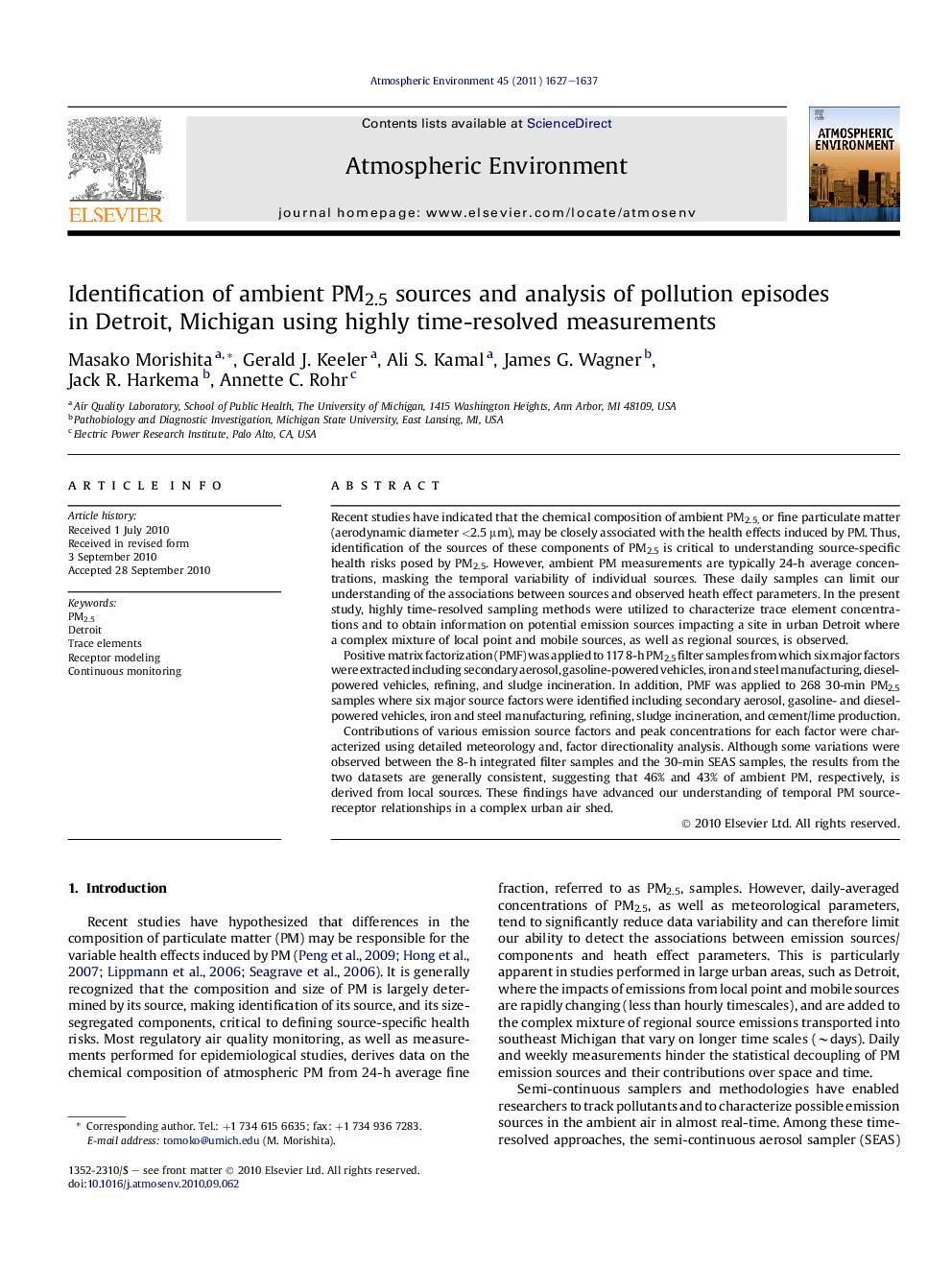| Article ID | Journal | Published Year | Pages | File Type |
|---|---|---|---|---|
| 4440062 | Atmospheric Environment | 2011 | 11 Pages |
Recent studies have indicated that the chemical composition of ambient PM2.5, or fine particulate matter (aerodynamic diameter <2.5 μm), may be closely associated with the health effects induced by PM. Thus, identification of the sources of these components of PM2.5 is critical to understanding source-specific health risks posed by PM2.5. However, ambient PM measurements are typically 24-h average concentrations, masking the temporal variability of individual sources. These daily samples can limit our understanding of the associations between sources and observed heath effect parameters. In the present study, highly time-resolved sampling methods were utilized to characterize trace element concentrations and to obtain information on potential emission sources impacting a site in urban Detroit where a complex mixture of local point and mobile sources, as well as regional sources, is observed.Positive matrix factorization (PMF) was applied to 117 8-h PM2.5 filter samples from which six major factors were extracted including secondary aerosol, gasoline-powered vehicles, iron and steel manufacturing, diesel-powered vehicles, refining, and sludge incineration. In addition, PMF was applied to 268 30-min PM2.5 samples where six major source factors were identified including secondary aerosol, gasoline- and diesel-powered vehicles, iron and steel manufacturing, refining, sludge incineration, and cement/lime production.Contributions of various emission source factors and peak concentrations for each factor were characterized using detailed meteorology and, factor directionality analysis. Although some variations were observed between the 8-h integrated filter samples and the 30-min SEAS samples, the results from the two datasets are generally consistent, suggesting that 46% and 43% of ambient PM, respectively, is derived from local sources. These findings have advanced our understanding of temporal PM source-receptor relationships in a complex urban air shed.
